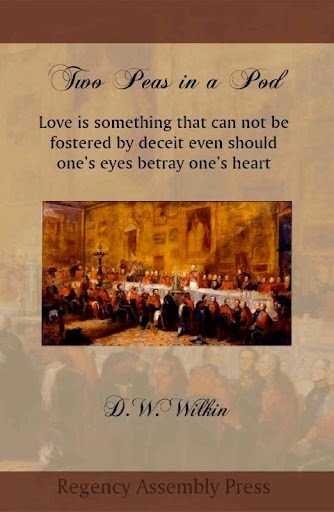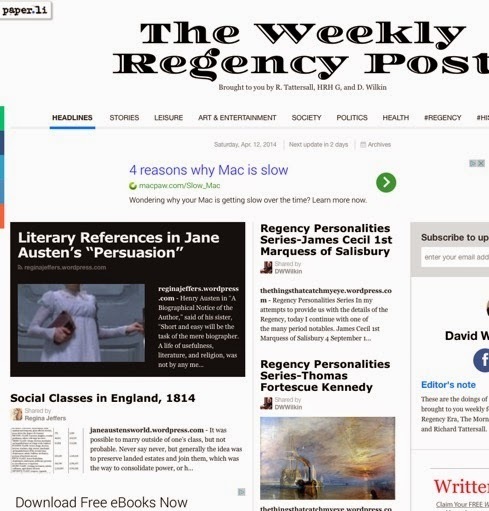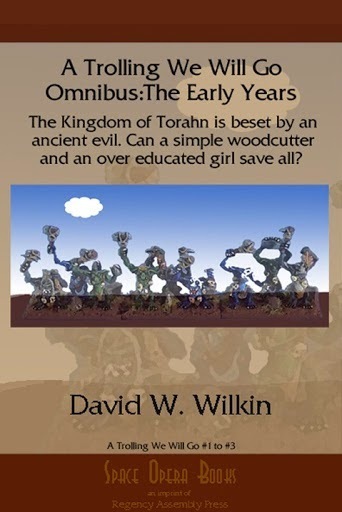D.W. Wilkin's Blog, page 172
November 4, 2014
Regency Personalities Series-John Vaughan 3rd Earl of Lisburne
Regency Personalities Series
In my attempts to provide us with the details of the Regency, today I continue with one of the many period notables.
John Vaughan 3rd Earl of Lisburne
3 May 1769 – 18 May 1831
John Vaughan 3rd Earl of Lisburne was known as the Honourable John Vaughan until 1820, was a British soldier and Member of Parliament.
Lisburne was the younger son of Wilmot Vaughan, 1st Earl of Lisburne. He served in the Army, transferring from the 87th Foot to the 58th Foot as a Captain in 1795, and being promoted to Major the next month and Lieutenant-Colonel later the same year. He eventually achieved the rank of Colonel. He also represented Cardigan in the House of Commons from 1796 to 1818. In 1820 he succeeded his half-brother in the earldom, but as this was an Irish peerage it did not entitle him to a seat in the House of Lords.
Lord Lisburne married Lucy, daughter of William Courtenay, 2nd Viscount Courtenay, in 1798. He died in May 1831, aged 62, and was succeeded in his titles by his son Ernest.


An Unofficial Guide to how to win the Scenarios of Soaked the 1st Expansion for Rollercoaster Tycoon 3
An Unofficial Guide to how to win the Scenarios of Soaked
I have been a fan of this series of computer games since early in its release of the very first game. That game was done by one programmer, Chris Sawyer, and it was the first I recall of an internet hit. Websites were put up in dedication to this game where people showed off their creations, based on real amusement parks. These sites were funded by individuals, an expense that was not necessarily as cheap then as it is now. Nor as easy to program then as it might be to build a web page now.
Prima Books released game guides for each iteration of the game, Rollercoaster Tycoon 1, Rollercoaster Tycoon 2 and Rollercoaster Tycoon 3 (RCT3) but not for the expansion sets. And unlike the first two works, the third guide was riddle with incorrect solutions. As I played the game that frustrated me. And I took to the forums that Atari, the game publisher hosted to see if I could find a way to solve those scenarios that the Prima Guide had written up in error. Not finding any good advice, I created my own for the scenarios that the “Official” Guide had gotten wrong.
Solutions that if you followed my advice you would win the scenario and move on. But if you followed the “Official” version you would fail and not be able to complete the game. My style and format being different than the folks at Prima, I continued for all the Scenarios that they had gotten right as well, though my solutions cut to the chase and got you to the winner’s circle more quickly, more directly.
My contributions to the “Official” Forum, got me a place as a playtester for both expansions to the game, Soaked and Wild. And for each of these games, I wrote the guides during the play testing phase so all the play testers could solve the scenarios, and then once again after the official release to make changes in the formula in case our aiding to perfect the game had changed matters. For this, Atari and Frontier (the actual programmers of the game) placed me within the game itself.
And for the longest time, these have been free at the “Official” Forums, as well as my own website dedicated to the game. But a short time ago, I noticed that Atari, after one of its bankruptcies had deleted their forums. So now I am releasing the Guide for one and all. I have added new material and it is near 100 pages, just for the first of the three games. It is available for the Kindle at present for $2.99.
(Click on the picture to purchase)
Not only are all 9 Scenarios covered, but there are sections covering every Cheat Code, Custom Scenery, the famous Small Park Competition, the Advanced Fireworks Editor, the Flying Camera Route Editor which are all the techniques every amusement park designer needs to make a fantastic park in Rollercoaster Tycoon 3.


November 3, 2014
Regency Personalities Series-Charles Poulett Thomson 1st Baron Sydenham
Regency Personalities Series
In my attempts to provide us with the details of the Regency, today I continue with one of the many period notables.
Charles Poulett Thomson 1st Baron Sydenham
13 September 1799 – 19 September 1841
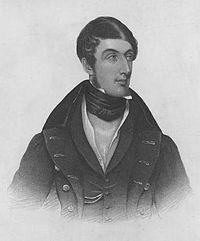
Charles Poulett Thomson
Thomson was Born at Waverley Abbey, near Farnham, Surrey, Thomson was the son of John Buncombe Poulett Thomson, a London merchant, by his wife Charlotte, daughter of John Jacob. His father was the head of J. Thomson, T. Bonar and Company, a successful trading firm that had dealings with Russia. After attending private schools until age 16, Thomson entered the family firm at Saint Petersburg. In 1817 he came home due to poor health and embarked on a prolonged tour of southern Europe. He returned to Russia in 1821 and over the next three years travelled extensively in eastern Europe. He established permanent residence in London in 1824 but frequently visited the Continent, especially Paris.
Thomson was returned to the House of Commons as MP for Dover in 1826. In 1830 he joined Earl Grey’s government as Vice-President of the Board of Trade and Treasurer of the Navy, an office he held until 1834. He was then President of the Board of Trade under Lord Melbourne in 1834 and again between 1835 and 1839. A free-trader and an expert in financial matters he was elected MP for Manchester in 1832, a seat which he held until 1839. He was continuously occupied with negotiations affecting international commerce until 1839, when he accepted the Governorship of Canada.
Sydenham succeeded Lord Durham as Governor of Canada in 1839. He was responsible for implementing the Union Act in 1840, uniting Upper Canada and Lower Canada as the Province of Canada and moving the seat of government to Kingston. Later that year, he was raised to the peerage as Baron Sydenham, of Sydenham in the County of Kent and of Toronto in Canada. Upper Canadians were given a choice in the matter of union, which they accepted; Lower Canada had no say, and as a result many French Canadians were opposed to both the union and Sydenham himself. Sydenham was just as anti-French as Durham had been, and he encouraged British immigration to make the French Canadian population less significant. French Canadians referred to him as le poulet, “the chicken”. Realizing he had almost no support in Lower Canada (at this time Canada East), he reorganized ridings to give the Anglo-Canadian population more votes, and in areas where that was infeasible, he allowed English mobs to beat up French candidates. Louis-Hippolyte Lafontaine was one such candidate who suffered from Sydenham’s influence; Lafontaine eventually left Canada East to work with Robert Baldwin in creating a fairer union for both sides.
Sydenham also settled the Protestant land dispute in Upper Canada (at this time Canada West), which the Family Compact had interpreted to refer only to the Anglican Church. Sydenham declared that half of the land set aside for Protestant churches would be shared between Anglicans and Presbyterians, and the other half would be shared between the other Protestant denominations. Sydenham wanted to make Canada more financially independent, so that there would less danger of annexation by the United States.
He had been working on this policy throughout the 1830s, when he was President of the Board of Trade in Britain, though he had little time to implement any economic reforms once he had arrived in Canada. After less than two years as Governor-General, Sydenham died in 1841. He had been described as sickly and an autopsy revealed severe gout. Shortly before his death, he had resigned his position and was due to return to England within weeks. However, on September 4, Sydenham was “riding a spirited horse near Parliament House, but could not, for a long time, get the animal to pass that building. After a severe application of spur and whip, however, the horse proceeded, but immediately after, put his foot upon a large stone… not being able to recover, fell and dragged his rider with him, fracturing the leg, and lacerating it above the knee.” This apparently led to a deadly infection. For fifteen days, Sydenham was described as suffering extreme pain, then died the morning of September 19, 1841. As he was unmarried, his peerage became extinct.


Two Peas in A Pod, A Regency Romance
Two Peas in a Pod has now passed the exclusivity to Amazon test and is available in wider release, electronically (digitally) for other readers now. We sold a few copies on Amazon but nothing to warrant an exclusivity period. Amazon is too big and too full of itself.
Two Peas in a Pod is still available as a Trade paperback click here to order Regency Assembly Press.
$3.99 for an electronic copy. The Trade Paperback, due to publishing costs and the cut that Amazon takes continue to see a Trade Paperback costing $15.99 (The much hyped royalties that we writers are supposed to get is nowhere near what the news reports say. Most of that price is taken by Amazon.)
iBookstore (These are my books
and still at Amazon
Here is a picture, which of course you can click on to go fetch the book:
Love is something that can not be fostered by deceit even should one’s eyes betray one’s heart.
Two brothers that are so close in appearance that only a handful have ever been able to tell them apart. The Earl of Kent, Percival Francis Michael Coldwell is only older than his brother, Peregrine Maxim Frederick Coldwell by 17 minutes. They may have looked as each other, but that masked how they were truthfully quite opposite to one another.
For Percy, his personality was one that he was quite comfortable with and more than happy to let Perry be of a serious nature. At least until he met Veronica Hamilton, the daughter of Baron Hamilton of Leith. She was only interested in a man who was serious.
Once more, Peregrine is obliged to help his older brother by taking his place, that the Earl may woo the young lady who has captured his heart. That is, until there is one who captures Peregrine’s heart as well.
There is a visual guide to Two Peas in a Pod 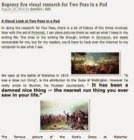 as well at Pinterest and a blog post here.
as well at Pinterest and a blog post here.


November 2, 2014
Regency Personalities Series-Elizabeth Montagu
Regency Personalities Series
In my attempts to provide us with the details of the Regency, today I continue with one of the many period notables.
Elizabeth Montagu
2 October 1718 – 25 August 1800
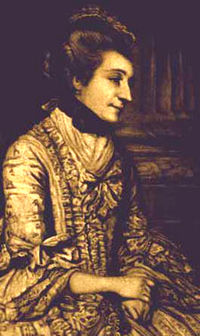
Elizabeth Montagu
Elizabeth Robinson was born in Yorkshire to Matthew Robinson and Elizabeth his wife née Drake. She was the first of three daughters. Conyers Middleton, the prominent Cambridge don, was the second husband of her Drake grandmother Sarah, and she and her sister Sarah, the future novelist Sarah Scott, spent time as children on extended stays with Dr. Middleton, as both parents were somewhat aloof. The two girls learned Latin, French, and Italian and studied literature. As a child, Elizabeth and Sarah, in particular, were very close.
While young, Elizabeth became a friend of Lady Margaret Harley, the only surviving child of Edward Harley, 2nd Earl of Oxford and Earl Mortimer. Lady Margaret and Elizabeth corresponded weekly when apart and were inseparable when together. She spent time with Lady Margaret in London and met many of the celebrated figures of the 1730s, including the poet Edward Young and the religious thinker Gilbert West. In Lady Margaret’s household, men and women spoke as equals and engaged in witty, learned banter. Visits to Lady Margaret became more important to Elizabeth when her mother inherited a country seat in Kent and made that her home, with the daughters.
In 1738, Montagu wrote to Harley explaining that she had no desire for men or marriage. She saw marriage as a rational and expedient convention and did not suppose it possible to love a man. In 1742 she married Edward Montagu, grandson of the 2nd Earl of Sandwich, who owned numerous coal mines and had several rents and estates in Northumberland. She was twenty-two and he was fifty years old.
The marriage was advantageous, but it was apparently not very passionate. All the same, she bore a son, John, the next year, and she loved her child immensely. When he died unexpectedly in 1744, she was devastated. She and Edward remained friendly throughout their remaining time together, but there were no more children or pregnancies. Prior to the loss of her son, she had not been very religious, but his death brought her to consider religion more and more. Her sister, meanwhile, Sarah Scott, was growing extremely devout.
Elizabeth kept a female companion with her most of the time. This person was not exactly a servant, but she would act in that role. She would be expected to carry things and aid Elizabeth on her daily round. Barbara Schnorrenberg suggests that Sarah was in this function and says that there is good reason to suggest that she married poorly to escape that situation (Schnorrenberg 723). After Elizabeth’s mother died, her father moved to London with his housekeeper, giving no money at all to his children. When Sarah was removed from her bad marriage, Elizabeth’s father (whose ward she was) not only gave her no financial help but forbade either Elizabeth or Matthew, her brother, from relieving her distress.
Beginning in 1750, she and Edward established a routine where they would winter in London in Mayfair and then, in the spring, go to Sandleford in Berkshire. He would then go on to Northumberland and Yorkshire to manage his holdings, while she would occasionally accompany him to the family manor-house at East Denton Hall, a clean-lined mansion of 1622 on the West Road in Newcastle upon Tyne.
She was a shrewd businesswoman, despite affecting to patronise Northumbrian society for its practical conversation. Though acting as Lady Bountiful to her miners and their families, she was pleased at how cheap this could be. She was also glad to note that: ‘Our pitmen are afraid of being turned off and that fear keeps an order and regularity amongst them that is very uncommon.’ Elizabeth enjoyed hearing the miners singing in the pit, but found, alas, that their dialect was ‘dreadful to the auditors’ nerves.’
In London, Elizabeth began to be a celebrated hostess. She organized literary breakfasts with Gilbert West, George Lyttelton, and others. By 1760, these had turned to evening entertainments with large assemblies. Card playing and strong drink were forbidden from these convocations, which were now known as blue stocking events.
By 1770, her home on Hill Street had become the premiere salon in London. Samuel Johnson, Sir Joshua Reynolds, Edmund Burke, David Garrick, and Horace Walpole were all in the circle. For writers, being introduced there meant patronage, and Montagu patronized a number of authors, including Elizabeth Carter, Hannah More, Frances Burney, Anna Barbauld, Sarah Fielding, Hester Chapone, James Beattie, and Anna Williams. Samuel Johnson’s hostess, Hester Thrale, was also an occasional visitor to Hill Street.
Among the blue stockings, Elizabeth Montagu was not the dominant personality, but she was the woman of greatest means, and it was her house, purse, and power that made the society possible. As a literary critic, she was a fan of Samuel Richardson, both Fieldings (Henry Fielding and Sarah Fielding), and Fanny Burney, and she was pleased to discover that Laurence Sterne was a distant relation. She was related to Laurence Sterne through the Botham family. Sterne entrusted her with the disposition of his papers upon his departure for France. He was in ill health and the prospect of his dying abroad was real. She was a supporter of Bishop Percy’s Reliques of Ancient English Poetry.
She also held similar events at her residence in the centre house of the Royal Crescent in Bath.
In 1760, George Lyttleton encouraged her to write Dialogues of the Dead, and she contributed three sections to the work, anonymously (her authorship of these is testified to elsewhere). It is a series of conversations between the living and the illustrious dead and works as a satire of 18th century vanity and manners. In 1769, she published An Essay on the Writings and Genius of Shakespear. In it, she proclaims William Shakespeare the greatest English poet and, in fact, the greatest poet of any nation.
She also attacks Samuel Johnson’s Preface to Shakespeare from 1765 for not having gone on to praise Shakespeare’s plays enough. While Johnson had dealt with text, history, and the circumstances of editing, Montagu wrote instead about the characters, plots, and beauties of the verse in Shakespeare and saw in him a championing of all things inherently English. When the book was initially published anonymously, it was thought to be by Joseph Warton, but by 1777 her name appeared on the title page. Johnson, for his part, was estranged from Montagu at this point.
In the late 1760s, Edward Montagu fell ill, and Elizabeth took care of him, although she resented giving up her freedom. He died in 1775. In 1776, she adopted her nephew, the orphan of her brother. Matthew Robinson, the child, kept his family name, but he was named Elizabeth’s heir. At that point, the coal and land holdings Montagu passed on to Elizabeth accounted for an income of £ 7,000 a year. She managed her wealth and estates well, and by her death her coal income was worth 10,000 pounds a year.
In 1777, she began work on Montagu House in Portman Square in London, moving in in 1781, on land leased for 99 years. She also expanded Sandleford’s Montagu House in the 1780s, and she got Capability Brown to design its gardens. She died in Montagu House in London on 25 August 1800 and left all of her money to Matthew Robinson, her nephew.


The Weekly Regency Post
A play upon The Morning Post that was published in the Regency Era. A newspaper owned by R. Tattersall and His Royal Highness, Prince George.
This is a weekly wrap-up of posts from various sources who write regency posts brought to you on a Sunday.
Visit at The Weekly Regency Post


November 1, 2014
Regency Personalities Series-Abram Combe
Regency Personalities Series
In my attempts to provide us with the details of the Regency, today I continue with one of the many period notables.
Abram Combe
1775 – 19 September 1827
Abram Combe was born in Edinburgh on 15 January 1775. His father was a brewer and a strict Calvinist. He had two brothers, George and Andrew, of whom George achieved a certain fame as an advocate of phrenology. Abram received a high school education but could not see the use of Latin After his education he was apprenticed in one of the tanneries near his parents’ home. After working for a while as a tanner he went to London and then to Glasgow, where he worked as a currier. In 1807 he returned to Edinburgh and resumed work as a tanner, a trade he pursued for the rest of his life. In his spare time he worked at various mechanical inventions.
He also wrote poems, plays and satirical pieces. His own poverty and the condition of the working class around him convinced him of the iniquity of the existing social system. Combe married Agnes Dawson in 1812, and they had several children. In 1820, Combe met the social reformer and entrepreneur Robert Owen and visited his co-operative community at New Lanark. Combe was quickly converted to the cause of co-operation and became an advocate of Owen’s principles back in Edinburgh, where he set up a co-operative society. Among his writings was Metaphorical Sketches of the Old and New Systems (1823), a popular critique of competition and exposition of co-operation.
He also wrote a number of works on religion and on the religious aspects of the co-operative system, such as The Religious Creed of the New System (1824). From his Calvinist upbringing, Combe inherited a belief in strict determinism, combined with a strong emphasis on individual moral responsibility. In 1825, together with A.J. Hamilton and others, Combe set up an Owenite co-operative community at Orbiston, near Glasgow. He influenced the Ricardian socialist economist John Gray, who paid tribute to him in an appendix of his book The Social System (1831), though remarking that Combe was “too little of a theorist… his mind was very prematurely devoted to practical measures.”
Gray published an address of advice and criticism of Combe’s experiment, entitled: A Word of Advice to the Orbistonians, on the Principles Which Ought to Regulate their Present Proceedings (1826). Combe also set up a religious association connected with his co-operative, the Society of the Adherents to the Divine Revelation. On its behalf he published and edited a journal called The Register. In addition to his organisational, propagandistic and journalistic work, Combe also took on a heavy workload of physical labour. In 1826, Combe’s health began to fail; he suffered from a serious lung disease, which killed him on 19 September 1827. His death spelled the end of the Orbiston co-operative.


October 31, 2014
Regency Personalities Series-James Graham 4th Duke of Montrose
Regency Personalities Series
In my attempts to provide us with the details of the Regency, today I continue with one of the many period notables.
James Graham 4th Duke of Montrose
16 July 1799 – 30 December 1874
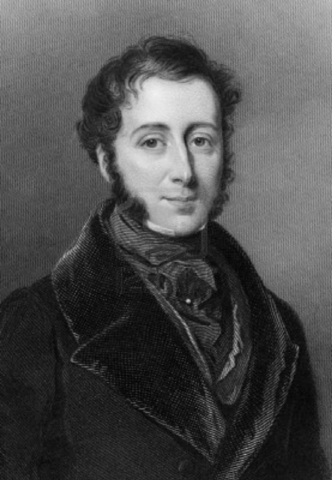
James Graham
James Graham 4th Duke of Montrose was the son of James Graham, 3rd Duke of Montrose, by his second wife Lady Caroline Marie, daughter of George Montagu, 4th Duke of Manchester. He was educated at Eton and Trinity College, Cambridge.
A member of Marylebone Cricket Club, Montrose made a single first-class appearance for an All-England team against Hampshire in 1828. He was recorded in the scorecard as Lord James Graham and scored two runs.
In 1821, aged 21, Montrose was appointed Vice-Chamberlain of the Household, despite not having a seat in parliament, and was sworn of the Privy Council the same year. He remained as Vice-Chamberlain until 1827. He was returned to Parliament for Cambridge in 1825, a seat he held until 1832, and served as a Commissioner of the India Board between 1828 and 1830. In 1836 he succeeded his father in the dukedom and entered the House of Lords.
When the Earl of Derby became Prime Minister in February 1852, Montrose was appointed Lord Steward of the Household, a post he retained until the government fell in December of the same year. He again served under Derby as Chancellor of the Duchy of Lancaster between 1858 and 1859 and under Derby and later Benjamin Disraeli as Postmaster General between 1866 and 1868, although he was never a member of the cabinet. As Postmaster-General he introduced the Electric Telegraphs Bill which resulted in the transfer of British telegraph companies to the Post Office.
Apart from his political career Montrose served as Chancellor of the University of Glasgow between 1837 and 1874 (succeeding his father) and as Lord Lieutenant of Stirlingshire between 1843 and 1874. He was made a Knight of the Thistle in 1845.
Montrose married the Hon. Caroline Agnes, daughter of John Horsley-Beresford, 2nd Baron Decies, in 1836. They had several children. He died in December 1874, aged 75, and was succeeded in the dukedom by his son, Douglas, Marquess of Graham. The Duchess of Montrose later remarried and died in November 1894.


A Trolling we Will Go Omnibus: The first three Fantasy stories of Humphrey and Gwendolyn
A Trolling We Will Go Omnibus:The Early Years Not only do I write Regency and Romance, but I also have delved into Fantasy.
The Trolling series, (the first three are in print) is the story of a man, Humphrey. We meet him as he has left youth and become a man with a man’s responsibilities.
We follow him in a series of stories that encompass the stages of life. We see him when he starts his family, when he has older sons and the father son dynamic is tested.
We see him when his children begin to marry and have children, and at the end of his life when those he has loved, and those who were his friends proceed him over the threshold into death.
All this while he serves a kingdom troubled by monsters. Troubles that he and his friends will learn to deal with and rectify.
Here are the first three books together as one longer novel.
A Trolling We Will Go, Trolling Down to Old Mah Wee and Trolling’s Pass and Present.
Available in a variety of formats.
For $6.99 you can get this fantasy adventure.
Barnes and Noble for your Nook
The stories of Humphrey and Gwendolyn. Published separately in: A Trolling we Will Go, Trolling Down to Old Mah Wee and Trollings Pass and Present.
These are the tales of how a simple Woodcutter and an overly educated girl help save the kingdom without a king from an ancient evil. Long forgotten is the way to fight the Trolls.
Beasts that breed faster than rabbits it seems, and when they decide to migrate to the lands of humans, their seeming invulnerability spell doom for all in the kingdom of Torahn. Not only Torahn but all the human kingdoms that border the great mountains that divide the continent.
Feedback
If you have any commentary, thoughts, ideas about the book (especially if you buy it, read it and like it ;-) then we would love to hear from you.


October 30, 2014
Regency Personalities Series-John Rennie the Younger
Regency Personalities Series
In my attempts to provide us with the details of the Regency, today I continue with one of the many period notables.
John Rennie the Younger
30 August 1794 – 3 September 1874
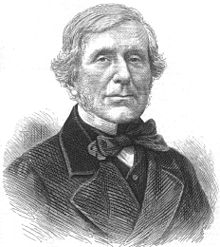
John Rennie
John Rennie, the son of John Rennie, was born at 27 Stamford Street, Blackfriars Road, London, on 30 August 1794. He was educated by Dr. Greenlaw at Isleworth, and afterwards by Dr. Charles Burney at Greenwich. He subsequently entered his father’s manufactory in Holland Street, Blackfriars Road, where he acquired a practical knowledge of his profession, and in 1813 he was placed under Mr. Hollingsworth, resident engineer of Waterloo Bridge, the foundations of which he personally superintended. In 1815 he assisted his father in the erection of Southwark Bridge, and in 1819 he went abroad for the purpose of studying the great engineering works on the continent.
On the death of his father in 1821, John remained in partnership with his brother George, the civil engineering portion of the business being carried on by him, whereas the mechanical engineering was supervised by George.
Rennie along with Philip Richards designed Royal William Victualling Yard, Plymouth, (1823–33). Covering 14 acres (57,000 m2), this grand classical style ensemble built from Plymouth limestone and Dartmoor granite, consists of grand gateway surmounted by statue of King William IV, there is the Slaughterhouse, then around a central dock basin, to the south Melville Square, a warehouse with a central courtyard, it has a clock tower over the main entrance, to the west of the basin is the Bakery with its mill and to the east the Brewery, with its cooperage.
The most important of John Rennie’s undertakings, from 1824, was the construction of London Bridge, the designs for which had been prepared by his father. The bridge was opened in 1831, when Rennie was knighted, being the first of the profession since Sir Hugh Myddleton to be thus distinguished. He was responsible for the New River Ancholme Drainage Scheme in Lincolnshire, and Horkstow Bridge, which he designed to cross the river at Horkstow in 1835–6, is one of the earliest suspension bridges to survive and remains substantially as designed. As engineer to the admiralty, a post in which he succeeded his father, he completed various works at Sheerness, Woolwich, Plymouth, Ramsgate, and the great breakwater at Plymouth, of which he published an ‘Account’ in 1848. Many years of his life were spent in making additions and alterations to various harbours on different parts of the coast, both in England and in Ireland. One example would be his work in the 1850s designing a drydock for Joseph Wheeler at his Rushbrooke yard in Cork. He completed the drainage works in the Lincolnshire fens commenced by his father, and, in conjunction with Telford, constructed the Nene outfall near Wisbech (1826–1831). He also restored the harbour of Boston in 1827–8, and made various improvements on the Welland. He also re-modernised the Chatham Dockyards in 1862. Creating 3 huge basins and passageways.
Although Rennie and his brother were early in the field as a railway engineers – having been involved, with George Stephenson, in the design of the Liverpool and Manchester Railway – their practice in this department was not very large. The company did however supply a number of locomotives for the London and Croydon Railway in 1838 and 1839. In 1852 John laid out a system of railways for Sweden, for which he received the order of Gustavus Vasa, and in 1855 he designed a series of railways and harbours for Portugal, none of which were, however, carried out.
Rennie was elected a member of the Institution of Civil Engineers on 25 June 1844, and he became president on 21 January 1845, retaining the office for three years. His presidential address in 1846 was a complete history of the profession of civil engineering. He also contributed papers on the drainage of the level of Ancholme, Lincolnshire, and on the improvement of the navigation of the Newry. He published, besides his Account of Plymouth Breakwater, (1848), the Theory, Formation, and Construction of British and Foreign Harbours (1851–54). He was elected a foreign member of the Royal Swedish Academy of Sciences.
Rennie retired from the active duties of his profession about 1862, and died at Bengeo, near Hertford, on 3 September 1874, just after completing his 80th year.




